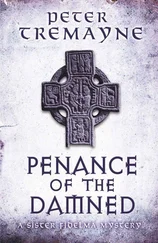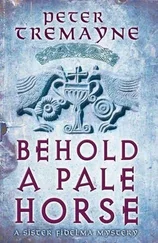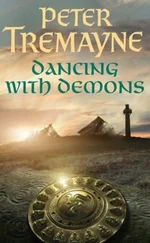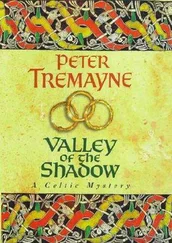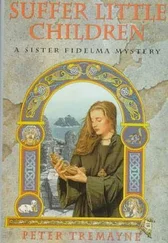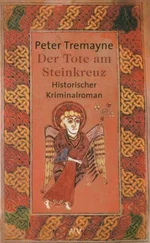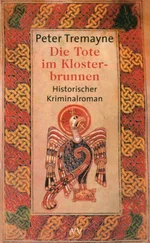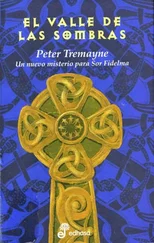Peter Tremayne - Hemlock at Vespers
Здесь есть возможность читать онлайн «Peter Tremayne - Hemlock at Vespers» весь текст электронной книги совершенно бесплатно (целиком полную версию без сокращений). В некоторых случаях можно слушать аудио, скачать через торрент в формате fb2 и присутствует краткое содержание. Жанр: Исторический детектив, на английском языке. Описание произведения, (предисловие) а так же отзывы посетителей доступны на портале библиотеки ЛибКат.
- Название:Hemlock at Vespers
- Автор:
- Жанр:
- Год:неизвестен
- ISBN:нет данных
- Рейтинг книги:4 / 5. Голосов: 1
-
Избранное:Добавить в избранное
- Отзывы:
-
Ваша оценка:
- 80
- 1
- 2
- 3
- 4
- 5
Hemlock at Vespers: краткое содержание, описание и аннотация
Предлагаем к чтению аннотацию, описание, краткое содержание или предисловие (зависит от того, что написал сам автор книги «Hemlock at Vespers»). Если вы не нашли необходимую информацию о книге — напишите в комментариях, мы постараемся отыскать её.
Hemlock at Vespers — читать онлайн бесплатно полную книгу (весь текст) целиком
Ниже представлен текст книги, разбитый по страницам. Система сохранения места последней прочитанной страницы, позволяет с удобством читать онлайн бесплатно книгу «Hemlock at Vespers», без необходимости каждый раз заново искать на чём Вы остановились. Поставьте закладку, и сможете в любой момент перейти на страницу, на которой закончили чтение.
Интервал:
Закладка:
“A fisherman by trade. But he is also the local seanchaí, the traditional historian and storyteller of the island.”
“Anyone else?”
“She went to see Father Patrick.”
“Who?”
“Father Patrick, the priest on the island.”
They had reached the edge of the cliffs now. Sister Fidelma steeled herself a little, hating the idea of standing close to the edge of the wild, blustery, open space.
“We found her directly below this spot,” Corcrain pointed.
“How can you be so sure?”
“That outcrop of rock is a good enough marker.” The apothecary indicated with the tip of his blackthorn.
Fidelma bent and examined the ground carefully.
“What are you looking for?”
“Perhaps for the rest of that chain. I’m not sure.”
She paused and examined a patch of broken gorse and trodden grass with areas of soft muddy ground. There were deep imprints of shoes, which the faint drizzle had not yet washed away. There was nothing identifiable, just enough remaining to show that more than one person had stood in this spot.
“So this area is consistent with the spot she must have gone over from?”
The apothecary nodded.
Fidelma bit her lip. The marks could well indicate that more than one person had left the path, which was two yards away from the edge of the cliff at this point, and stood near to the edge of the cliff. But the most important thing about the cliff edge here was the fact that it was at least six feet away from the worn track. There was surely no way that the Abbess Cuimne could go over the cliff by accident while walking along the path. To fall over, she would have had deliberately to leave the pathway, scramble across some shrub and gorse and balance on that dangerous edge. But if not an accident… what then?
There was something else, too, about the cliff edge. But she did not wish to move too close, for Fidelma hated high, unprotected places.
“Is there a means of climbing down here?” she suddenly asked Corcrain.
“Only if you are a mountain goat, I reckon. No, it’s too dangerous. Not that I am saying it is totally impossible to get down. Those with knowledge of climbing such inaccessible spots might well attempt it. There are a few caves set into the face of the cliff along here and once some people from the mainland wanted to go down to examine them.”
“At this spot?”
“No. About three hundred yards along. But the bó-aire saw them off, declaring it was too dangerous. That was last year.”
Fidelma took off her short woollen cloak, which she wore to protect her from the almost continuous drizzle of the island’s grey skies, and put it down near the cliff edge. Then she knelt down before stretching full-length on it and easing forward to peer over the edge. It was as the apothecary said, only someone skilled in the art of climbing or a mountain goat would even attempt to climb down. She shivered for a moment as she stared down to the rocky beach three hundred feet below.
When she had stood up and brushed down her cloak she asked Corcrain, “Where do I find this man Congal?”
Congal was a big man. He sat before a plate piled with fish and a boiled duck’s egg. Though he sat at table, he still wore his fisherman’s clothes, as if he could not be bothered to change on entering his bothán. Yet the clothes simply emphasized his large, muscular torso. His hands, too, were large and callused.
“Sad, it is,” he growled across the scrubbed pine table to where Sister Fidelma sat with a bowl of sweet mead which he had offered in hospitality. “The woman had a good life before her but it is a dangerous place to be walking if you don’t know the ground.”
“I’m told that she was exploring here.”
The big man frowned.
“Exploring?”
“I’m told that she spoke with you a few times.”
“Not surprising that she would do so. I am the local seanchaí. I know all the legends and tales of the island.” There was more than a hint of pride in his voice. Sister Fidelma realized that pride went with the islanders. They had little enough but were proud of what they did have.
“Is that what she was interested in? Ancient tales?”
“It was.”
“Any subject or tale in particular?”
Conga! shifted as if defensively.
“None as I recall.”
“What then?”
“Oh, just tales about the ancient times, when the druids of Iar-muma used to hunt down the priests of Christ and kill them. That was a long time ago, even before the Blessed Patrick came to our shores.”
“You provided her with some of these tales?”
Congal nodded.
“I did so. Many priests of Christ found a refuge on this island during the pagan times. They fled from the mainland while the king of Iarmuma’s men were burning down the churches and communities.”
Sister Fidelma sighed. It did not sound the sort of subject Abbess Cuimne would be interested in pursuing. As representative of the Archbishop, she had, as Sister Fidelma knew, special responsibility for the uniform observances of the faith in Ireland.
“But no story in particular interested her?” she pressed.
“None.”
Was Congal’s voice too emphatic? Sister Fidelma felt an uneasy pricking at the back of her neck, that odd sensation she always felt when something was wrong, or someone was not telling the full truth.
Back at the cabin of the bó-aire, Sister Fidelma sorted through the leather satchel which contained the belongings of the dead Abbess. She steeled herself to sorting through the items which became objects of pathetic sentiment. The items proclaimed the Abbess to have some vanity, the few cosmetics and a jar of perfume, her rosary and crucifix, a splendidly worked piece of ivory and gold, which proclaimed her rank, as sister to the High King, rather than her role as a humble religieuse. The rosary beads were of imported ivory. There were items of clothes for her journey. All were contained in the leather shoulder satchel which traveling monks and nuns carried on their journeys and pilgrimages.
Sister Fidelma sorted through the satchel twice before she realized what was worrying her. She turned to the impatient bó-aire.
“Fogartach, are you sure these are all the Abbess Cuimne’s possessions?”
The young magistrate nodded vehemently.
Sister Fidelma sighed. If Abbess Cuimne was on the island to carry out some search or investigation, surely she would have had a means of recording notes? Indeed, where was the pocket missal that most religieuses of rank carried? Over a century before, when Irish monks and nuns had set out on their missions to the far corners of the world, they had to carry with them liturgical and religious tracts. It was necessary, therefore, that such works were small enough for missionaries to carry with them in special leather satchels called tiag liubhar. Therefore the monks engaged in the task of copying such books began to reduce their size. Such small books were now carried by almost all learned members of the church. It would be odd if the Abbess had not carried even a missal with her.
She drummed her fingers on the tabletop for a while. If the answer to the conundrum was not forthcoming on the island, perhaps it might be found in the wager with Artagán, the bishop of An Chúis on the mainland. She made her decision and turned to the expectant bó-aire.
“I need a currach to take me to An Chúis on the mainland at once.”
The young man gaped at her in surprise.
“Have you finished here, Sister?”
“No. But there is someone I must consult at An Chúis immediately. The boat must wait for me so that I can return here by this afternoon.”
Bishop Artagán rose in surprise when Sister Fidelma strode into his study at the Abbey of An Chúis, after being ceremoniously announced by a member of his order. It was from here that Artagán presided over the priesthood of the Corco Dhuibhne.
Читать дальшеИнтервал:
Закладка:
Похожие книги на «Hemlock at Vespers»
Представляем Вашему вниманию похожие книги на «Hemlock at Vespers» списком для выбора. Мы отобрали схожую по названию и смыслу литературу в надежде предоставить читателям больше вариантов отыскать новые, интересные, ещё непрочитанные произведения.
Обсуждение, отзывы о книге «Hemlock at Vespers» и просто собственные мнения читателей. Оставьте ваши комментарии, напишите, что Вы думаете о произведении, его смысле или главных героях. Укажите что конкретно понравилось, а что нет, и почему Вы так считаете.

